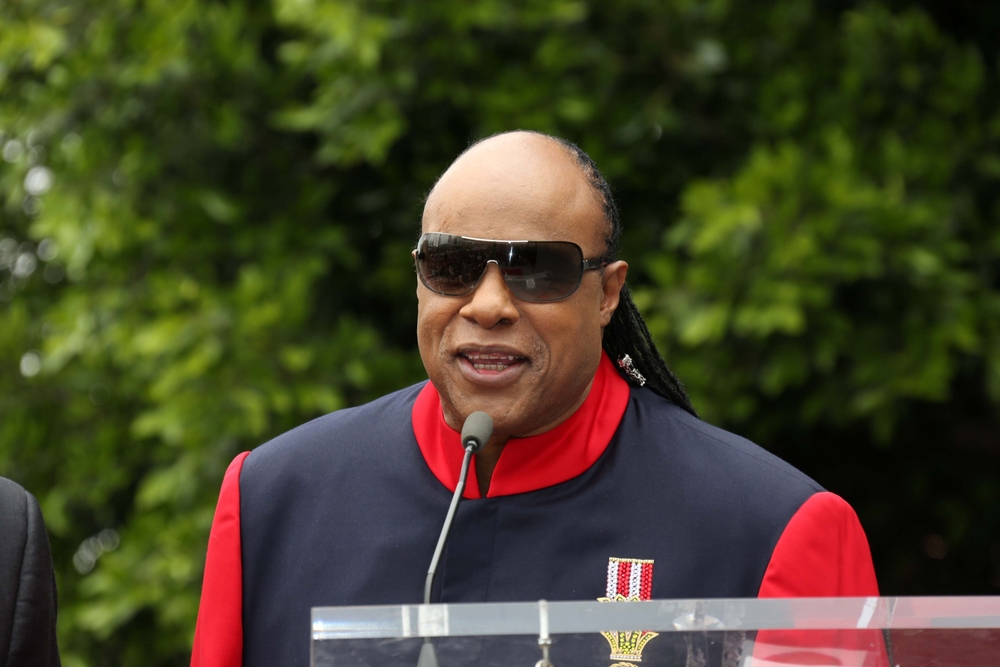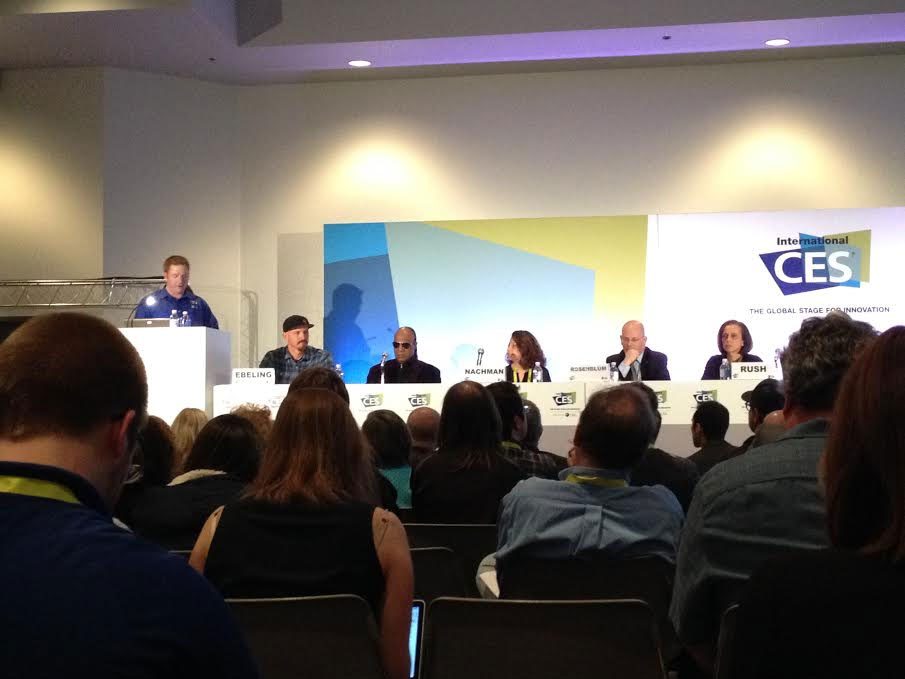Stevie Wonder Speaks at CES

LAS VEGAS – Musician Stevie Wonder spoke here at CES about the need to make technology more accessible to people with disabilities.
"We want to see a time where the issue of technology being accessible to people with disabilities is not an issue that we have to discuss... but it's just a natural, given fact" that everyone has equal access to technology, Wonder said at a panel event Tuesday (Jan. 6).
One technology that Wonder, who is blind, would like to use someday is a car, he added.
Mike May, president and CEO of Sendero Group, a company that makes navigation systems for blind people, discussed some of the difficulties he faces in using technology as a blind person. For example, the smartphone app that holds all of the information for the events of CES this year includes a navigation system to help attendees get from place to place. But the system is entirely visual; it shows a person's current location as a blue dot and his or her destination as a red dot, toward which the person can navigate. A blind person would not be able to use this system.
In some cases, only small fixes are needed to make a technology more accessible to people with disabilities — such as testing an app to make sure it works with voice screen-reading systems for the blind, May said. [Top 10 Mysterious Diseases]

And oftentimes, the technology already exists to make something accessible to people with disabilities, said Mick Ebeling, founder and CEO of Not Impossible Labs, a company that utilizes crowdsourcing to find low-cost solutions to health care issues. "We can use the technology that exists; I think it's a question of looking at things from a different perspective," Ebeling said.
For example, when scientists recently updated the computer-based speaking system that scientist Stephen Hawking uses to communicate, "we didn't want to invent new things when we didn't have to," said Lama Nachman, director of the Anticipatory Computing Lab at Intel, who worked on the update. Hawking has amyotrophic lateral sclerosis (ALS), a progressive neurological disease that eventually leads to loss of function of the muscles used in voluntary movements, such as talking.
Sign up for the Live Science daily newsletter now
Get the world’s most fascinating discoveries delivered straight to your inbox.
One thing that limited Hawking's ability to communicate was that he was typing one letter at a time to spell out words. But simply incorporating word prediction software, which already exists on most smartphones, doubled his speed, Nachman said.
It's also a misconception that technologies for people with disabilities will only help a specific group of people — rather, such technologies could also benefit people without disabilities, experts agreed.
Howard Rosenblum, CEO of the National Association of the Deaf, said that adding captions to every video on YouTube would not only help people who are deaf, but would also help the general public search for specific videos within the site.
This is an "example of technology that is thought to be used for a specific disability but makes it more accessible for everyone," Rosenblum said through an interpreter.
Still, experts acknowledged that there are limits to how useful such a "dual approach" that aims to help people with disabilities as well as other populations can be. "A sighted person doesn't want their phone to chat to them as much as I do," May said. But it may be possible to apply certain filters, he said, so people can choose how much or how little of a certain function they want.
Follow Rachael Rettner @RachaelRettner. Follow Live Science @livescience, Facebook & Google+. Original article on Live Science.

Rachael is a Live Science contributor, and was a former channel editor and senior writer for Live Science between 2010 and 2022. She has a master's degree in journalism from New York University's Science, Health and Environmental Reporting Program. She also holds a B.S. in molecular biology and an M.S. in biology from the University of California, San Diego. Her work has appeared in Scienceline, The Washington Post and Scientific American.









